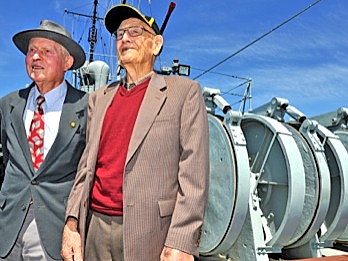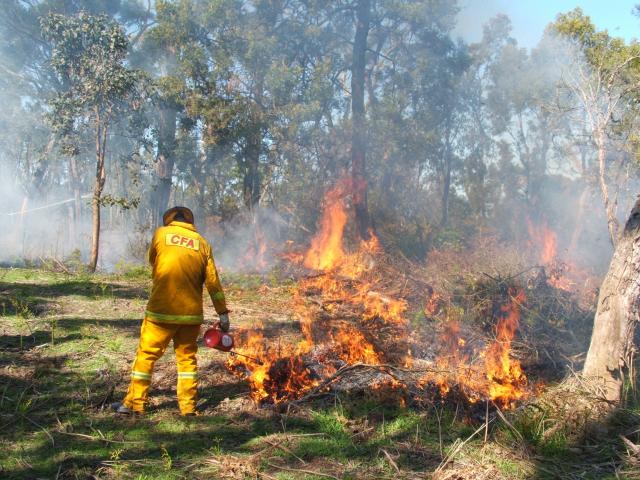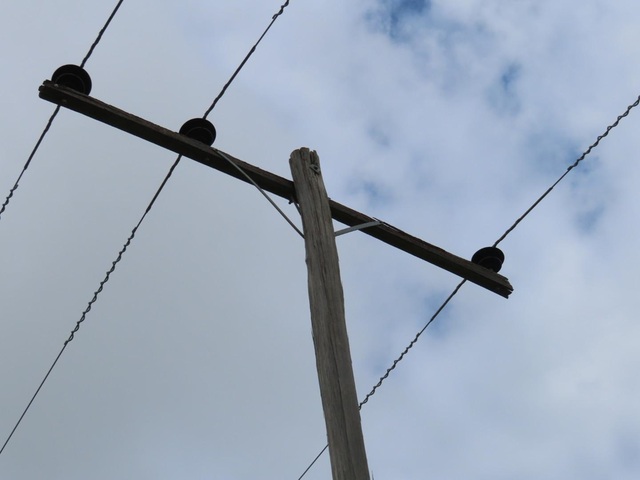The last living crew members of the historic WW2 corvette HMAS Castlemaine visited their old ship in Williamstown last week with a cargo full of memories.
Norman Vockenson, 89, of Currimundi on the Sunshine Coast, and Don Anderson, 90, of Kyabram, are the only known survivors of 220 crew.
“It’s very emotional and it takes you back so far,” said Mr Vockenson, who was with the ship from April 1944 to December 1945 and worked in the supply department.
“Every moment is a memory and every moment is a happy memory.
“There were nine of us in what we call the six mess; there were nine of us living in a space that was really meant for four.
“Many plans were hatched down there that the rest of the ship didn’t know much about.
“This was always a happy ship. You can feel it when you step on a ship, you can feel whether it’s a happy ship or not.
“The minute I stepped aboard . . . when I got up the ladder there was an old able seaman there and he looked at me and he said, ‘You’re a granite-faced bastard aren’t you’, and from then on I was quite often called ‘Granite’.
“They were happy days and happy memories of serving with decent men.”
Mr Vockenson said he doubted if his ‘old girl’ was still in six mess.
“My pin-up girl down in six mess was [actress] Merle Oberon,” he said. “She was upper class, shall we say, and I had a big picture of her with a strapless dress on and she had lovely shoulders.
“All the other guys had [actress] Betty Grable . . . long legs, big bust and blonde hair.
“I had a happy night one night down in six mess. We’d all had a bit too much to drink and we decided after our meal that we’d have a Yankee dish-up: you throw all the dirty plates out the portholes – forks, plates. Next morning we had nothing to eat off.”
Before last Wednesday, he had not met Mr Anderson, who joined the ship in September 1942 and was a quartermaster by the time he left in August 1943.
“I was the youngest crew member when I joined the Castlemaine and this is why I’ve outlived the others,” Mr Anderson said.
“A ship is a living thing. This is something you get to feel very quickly, that even in comparatively calm waters the ship is moving.
“And this is one reason why people refer to ships as ‘she’, as something that’s alive. I enjoyed rough weather because the ship was moving and the ship was alive and I wasn’t seasick.”
Mr Anderson points out that the hatch he is sitting on is where sailors used to perch after vomiting over the side.
He recalls with bitterness the sinking of the HMAS Armidale
by the Japanese off what is now Timor Leste on December 1, 1942.
Only 49 of the 149 men aboard survived.
Mr Anderson said that on the Castlemaine’s second trip to Timor, the Japanese knew they were coming.
“We were going in company with the Armidale,” he said. “The Armidale was taking soldiers to put ashore, we were going up there to unload stores and then bring back refugees.
“I was astounded to see as we were racing for home – because we were being attacked – that the Armidale turned around and steamed back. She’d had orders to take back at all costs to unload her troops. There was just no hope, but she saved our lives.”
Mr Anderson’s naval career ended unexpectedly.
“I didn’t want to leave the ship,” he said.
“It was a good ship to be in. We’d come back from Darwin and we were doing a wonderful run, from Sydney to Brisbane, Brisbane to Sydney, lovely ports to be in. I got chickenpox. I was brought ashore and my ship left and I didn’t see the Castlemaine again.”







